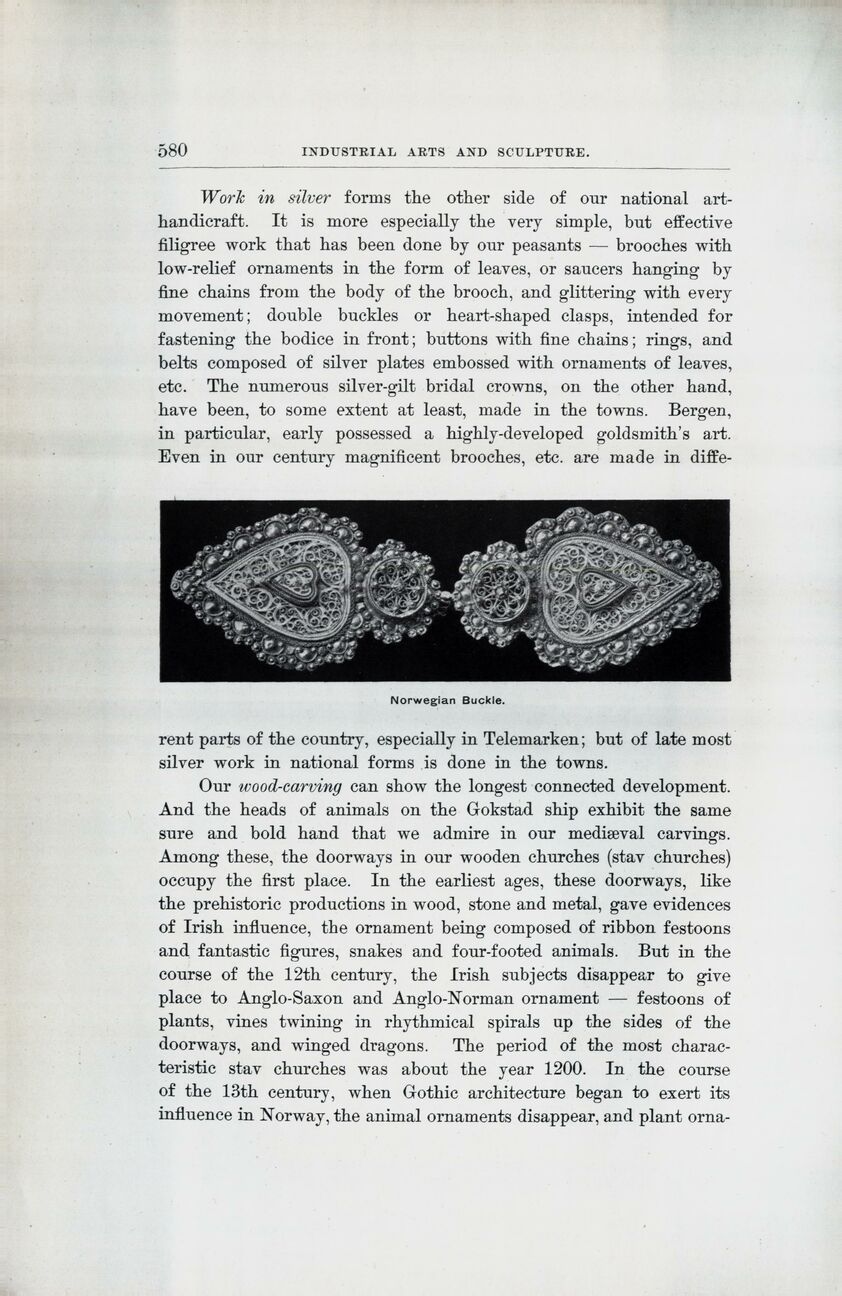
Full resolution (JPEG) - On this page / på denna sida - Industrial Arts and Sculpture, by L. Dietrichson

<< prev. page << föreg. sida << >> nästa sida >> next page >>
Below is the raw OCR text
from the above scanned image.
Do you see an error? Proofread the page now!
Här nedan syns maskintolkade texten från faksimilbilden ovan.
Ser du något fel? Korrekturläs sidan nu!
This page has been proofread at least once.
(diff)
(history)
Denna sida har korrekturlästs minst en gång.
(skillnad)
(historik)
Work in silver forms the other side of our national
art-handicraft. It is more especially the very simple, but effective
filigree work that has been done by our peasants — brooches with
low-relief ornaments in the form of leaves, or saucers hanging by
fine chains from the body of the brooch, and glittering with every
movement; double buckles or heart-shaped clasps, intended for
fastening the bodice in front; buttons with fine chains; rings, and
belts composed of silver plates embossed with ornaments of leaves,
etc. The numerous silver-gilt bridal crowns, on the other hand,
have been, to some extent at least, made in the towns. Bergen,
in particular, early possessed a highly-developed goldsmith’s art.
Even in our century magnificent brooches, etc. are made in
different parts of the country, especially in Telemarken; but of late most
silver work in national forms is done in the towns.
 |
| Norwegian Buckle. |
<< prev. page << föreg. sida << >> nästa sida >> next page >>